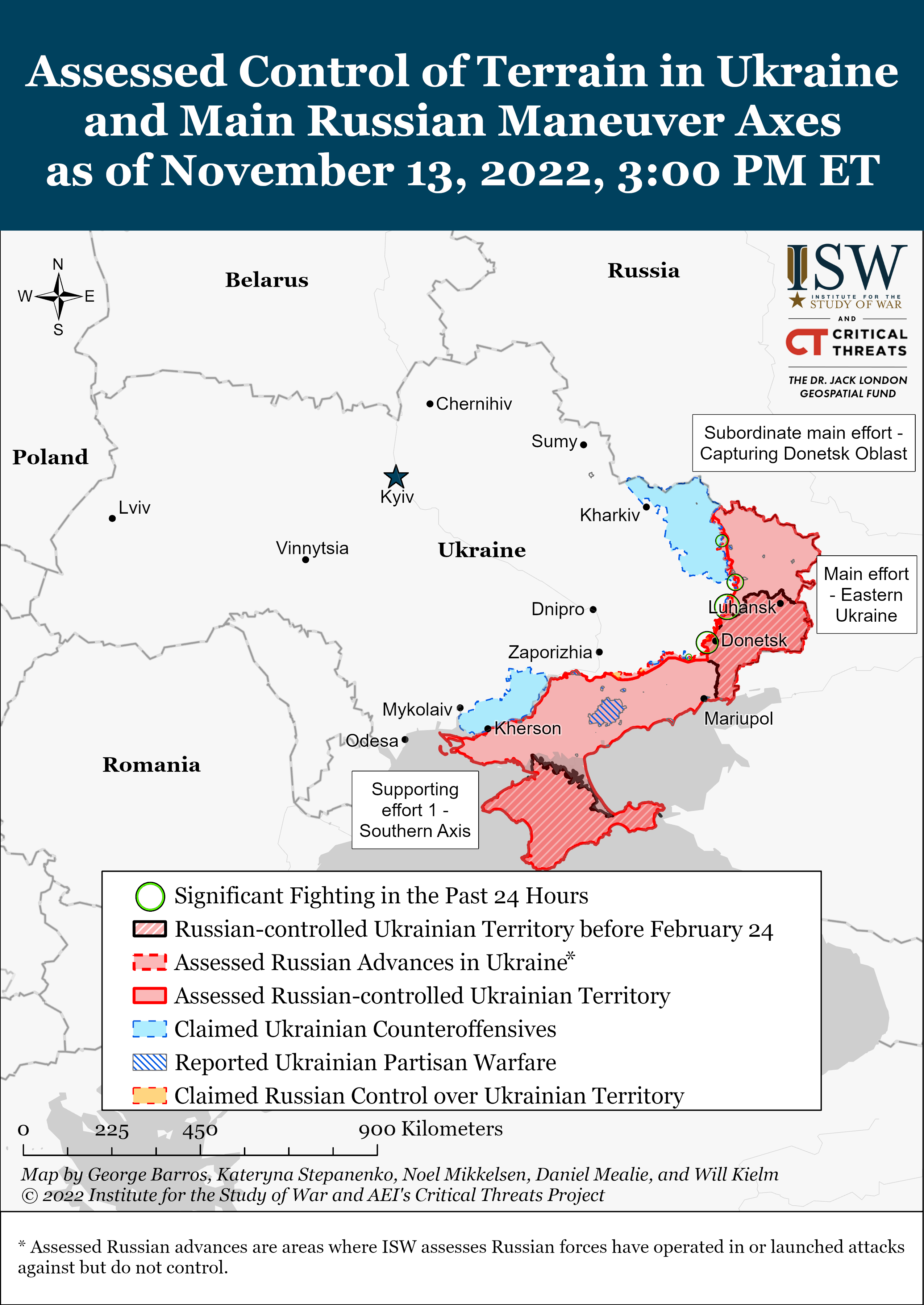ISW / USA
Frederick W. Kagan
Russian offensive operations in Donetsk Oblast will intensify in the coming weeks as additional mobilized servicemen arrive along with forces withdrawn from western Kherson.
Ukrainian forces in the area will find themselves hard-pressed, and Kyiv will very likely have to divert troops to defend against these renewed Russian offensives. The Russians are not likely to make operationally significant gains despite their renewed efforts, although they could conceivably take Bakhmut over time at enormous cost. Russian mobilized servicemen have shown themselves to be inadequately trained, poorly equipped, and very reluctant to fight. They are not arriving in cohesive units but rather are being sent largely as individual or small unit replacements to units that have been fighting without rest for nine months, have suffered devastating losses in men and equipment, and are largely demoralized themselves.
Russian forces operating in Donetsk Oblast include conventional units of the regular Russian Armed Forces, mobilized servicemen, Wagner Private Military Company troops, BARS (Russian volunteer reserve) formations, militia units from the Donetsk and Luhansk People’s Republics, soldiers from Ramzan Kadyrov’s Chechen units, and volunteer battalions. This bizarre congeries of combat forces will have considerably less effective combat power than would a grouping of regular units of similar size. It is extremely unlikely that Surovikin will be able to forge it into a force able to conduct large-scale offensive mechanized maneuver warfare, particularly since he is not even taking (or being allowed to take) the time to build a coherent strike force before hurling it into the attack. This weird mix of forces will likely make some gains through sheer weight of numbers, but Ukrainian defenders, likely reinforced, will most probably force it to a halt over the next few months not far from its starting points.
Ukraine will also likely recoup combat power from western Kherson and redeploy it to other areas for both defensive and counter-offensive operations. The UAF could conceivably try to chase the Russians across the Dnipro River at various points but is unlikely to do so because the logistics of supporting a Ukrainian lodgment on the eastern bank are very daunting. The UAF is therefore more likely to consolidate its control of the western bank, leave enough force to deter any Russian attempt to cross the river again, and reallocate forces to other areas. The Russian offensive in Donetsk Oblast will likely require the UAF to divert some forces to defend in that area, but the UAF will likely send at least part of the recouped combat power either to reinforce its ongoing counter-offensive in Luhansk Oblast or to open another counter-offensive somewhere else (we will not speculate about where that might be).
Ukrainian forces have continued to make limited gains in Luhansk Oblast and will likely be able to make more gains if they are reinforced by troops from western Kherson. The Russians are also reinforcing their defensive positions in Luhansk Oblast, to be sure, but the UAF has been grinding forward nevertheless, and there is no reason to forecast that the ill-trained, ill-equipped, and low-morale Russian reservists will be able to stop Ukrainian troops, buoyed by their victories, from advancing.
